

Sea turtles – the majestic but elusive creatures I’d been desperate to see for five years. And then last week, I had the most magical experience of my life swimming with a group of sea turtles.
This post was going to be about that. I was going to share exactly where I had this experience so that others could have a similar one and feel the same love for these creatures that I have. But word-of-mouth is spreading and so are the stories of utter thoughtlessness. People chasing the turtles. Parents encouraging children to touch them. Spearfishing around them! A peaceful haven now filled with noise and splashing.
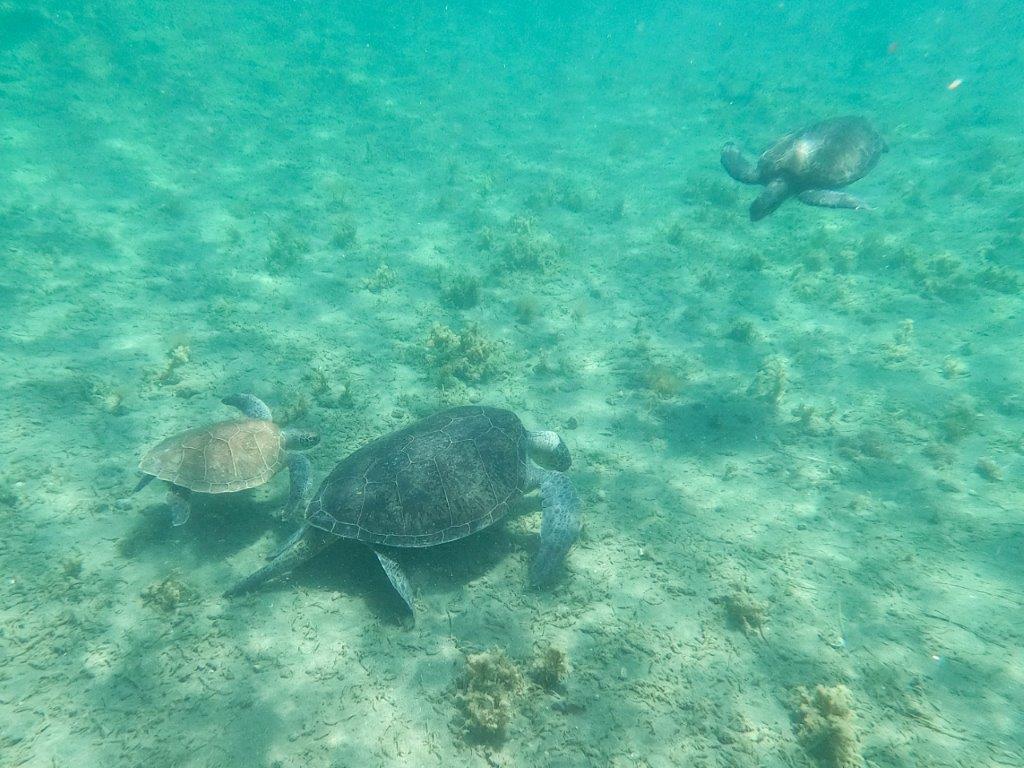
My unease is growing, knowing that I had a part to play in this. I was on a high after what I’d experienced and I shared photos, I told people where to see the turtles. I only told people who I knew would be respectful around them but, nonetheless, I helped the word-of-mouth spread. So I guess I’m writing this post in the hope that it helps the situation in some small way.
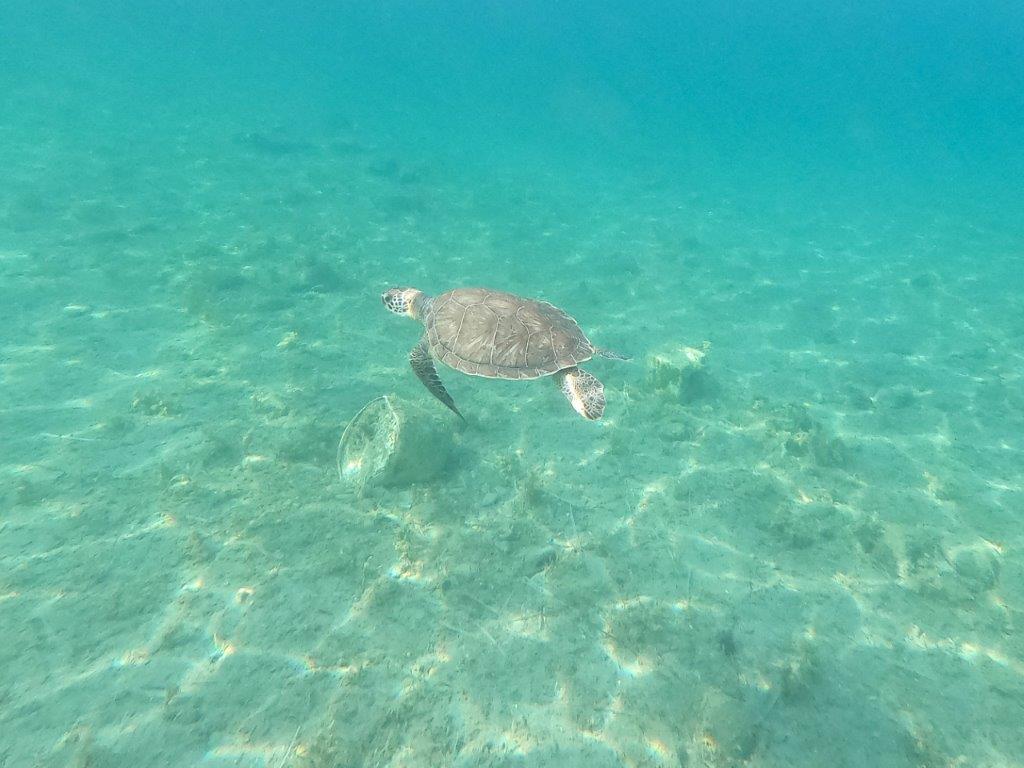
Until Herc was born, I ran our local Turtle Watch group. I was fortunate to be trained by the island’s most eminent marine biologist, Dr Andreas Demetropoulos, who has spent 35 years trying to protect the endangered turtles of Cyprus. I’m no expert but I have picked up a fair bit of turtle knowledge over the years. However, most of what I’m about to write is just common sense. And having a respect for nature.
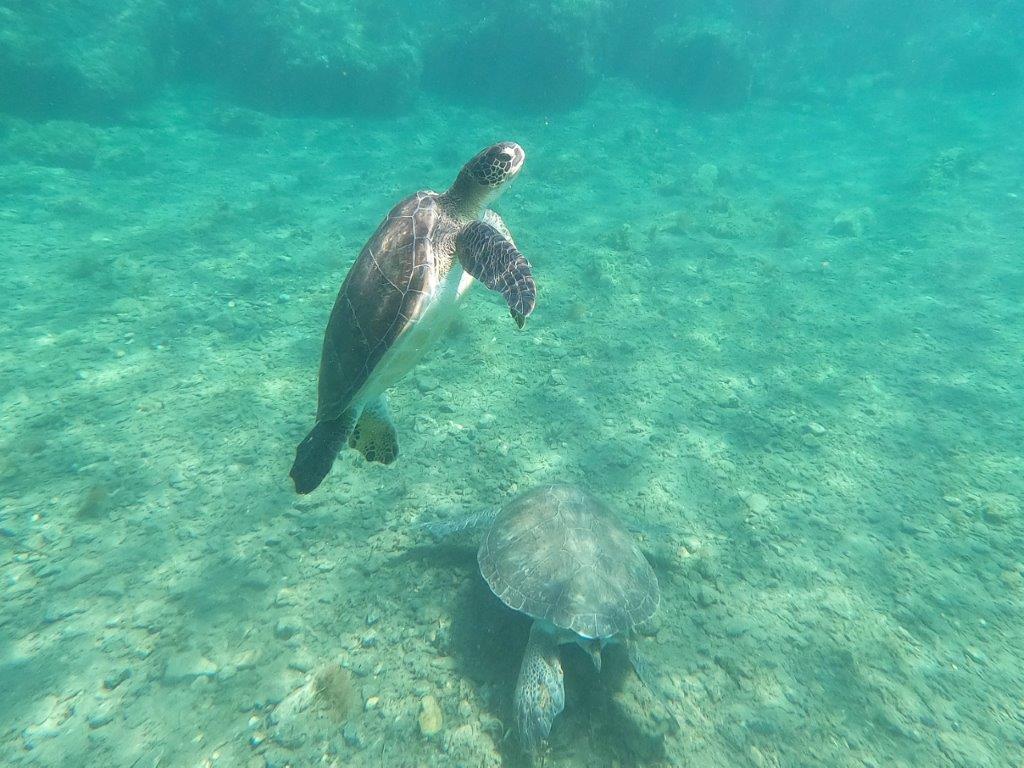
If you are ever in the privileged position of being close enough to a turtle to touch it, don’t! I know it’s tempting. I was tempted. But just don’t.
It’s incredible enough to just see one.
The most obvious reason for not touching a turtle is that you could scare them. I saw them in a quiet, protected bay that seemed to attract juvenile turtles. They were perhaps drawn by the relative safety of the bay but also because it was filled with sea grass that green sea turtles feed on. I’ve heard of people swimming down to touch them while they were feeding and chasing them away. You should never do anything that alters a turtle’s behaviour.
I only recently discovered another important reason for not touching turtles. Their shell has a mucousy covering that protects them from bacteria and harmful parasites. Touching them can compromise this protective barrier.
In Hawaii, touching a turtle is such a serious crime that fines can reach $10,000!
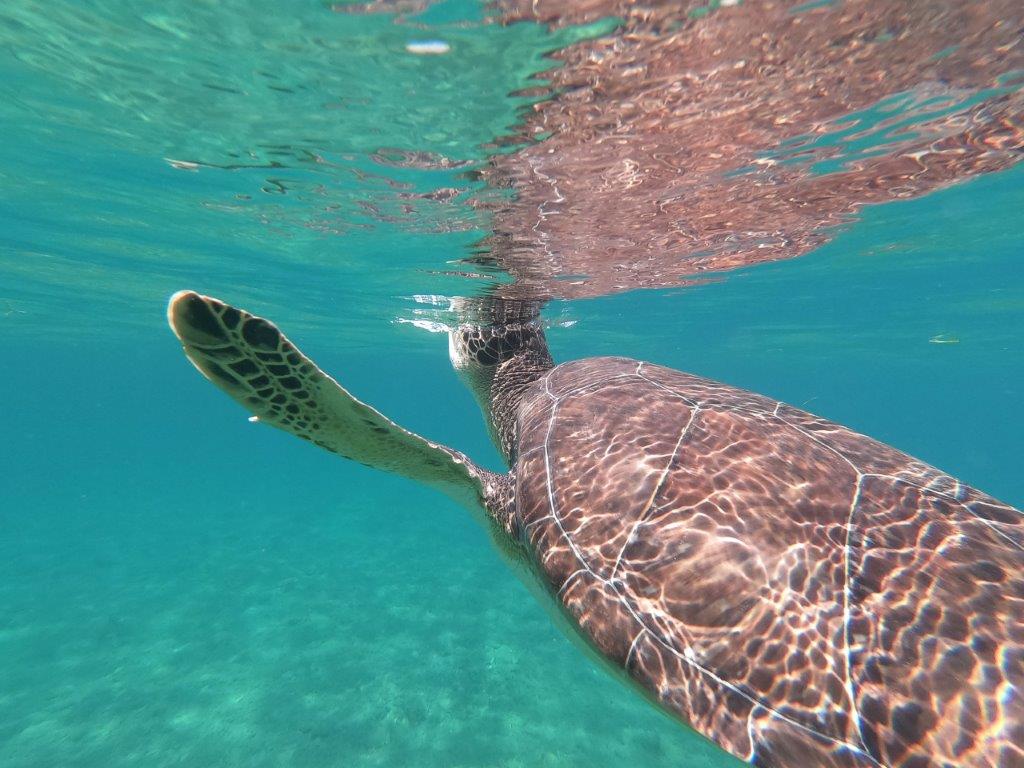
This seems so obvious but I think there can be a lack of awareness around chasing a turtle that is trying to get away from you and respectfully swimming alongside one who is relaxed about you being there. Read their body language. If a turtle swims with its shell angled towards you, that’s a defensive gesture so keep your distance. If it darts away, it doesn’t want to be near you, so don’t pursue it – which may seem obvious, right? But I saw one woman who was so intent on pursuing a fleeing turtle that she literally barrelled straight over the top of me. There was a level of hysteria that was unnerving.
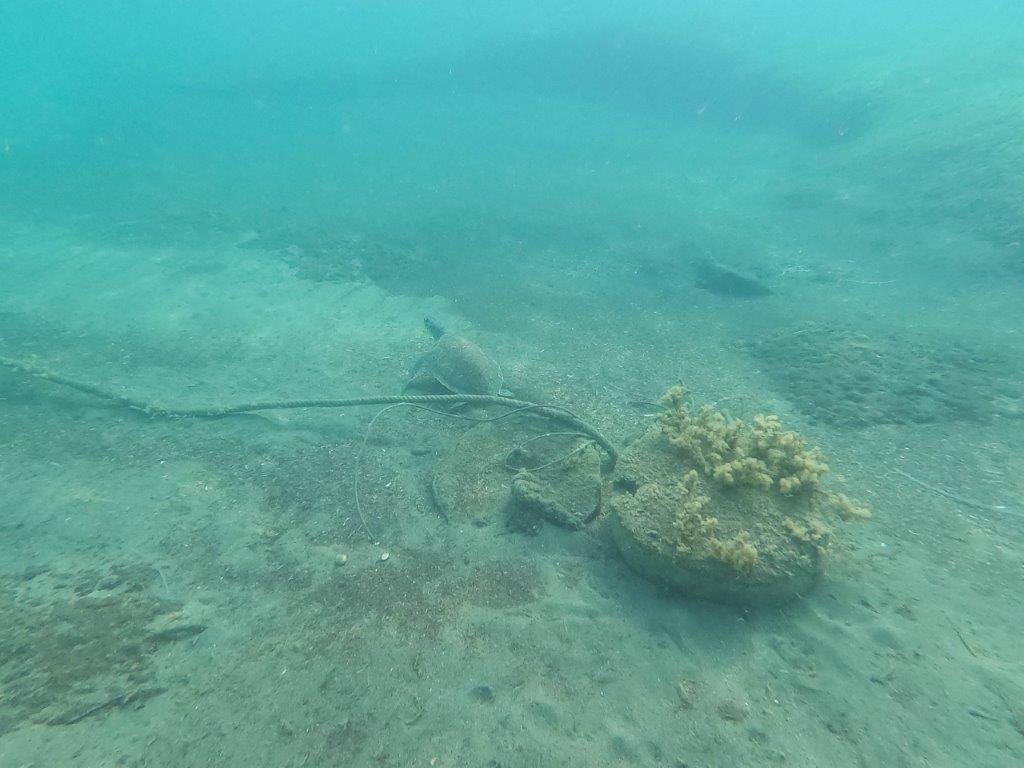
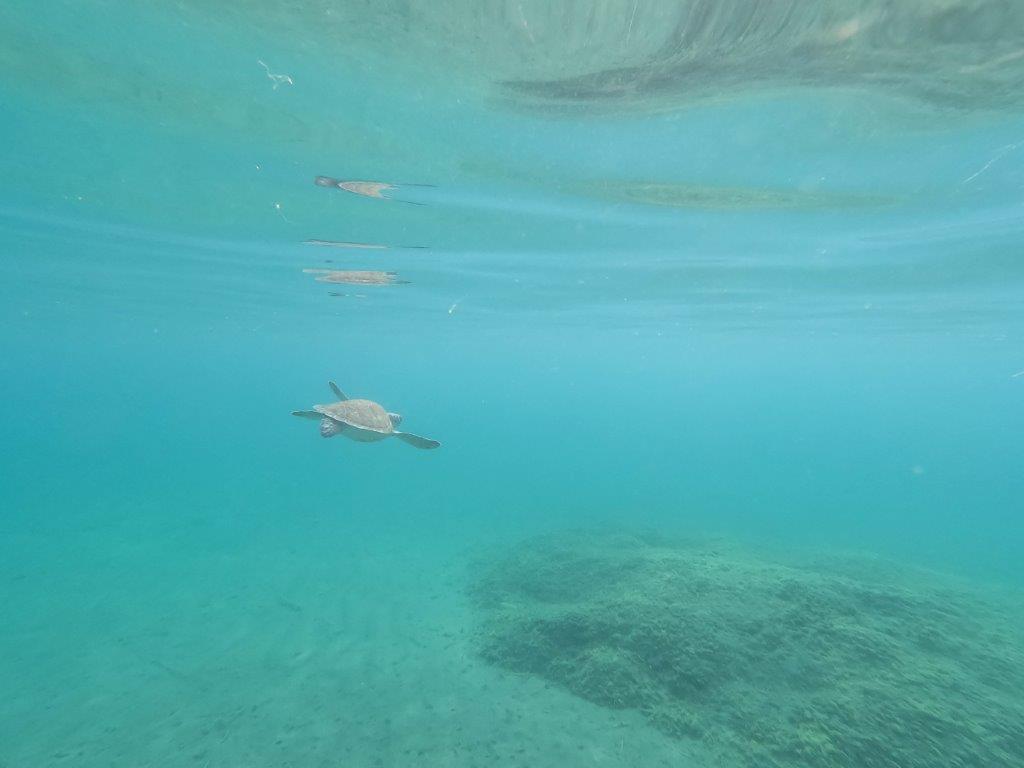
The juvenile turtles were more fearful, so we just watched from a distance. However, the older turtles were far more relaxed around people. When we approached (slowly and quietly) they just glanced at us and carried on eating. When they needed to surface for air, they did so in a relaxed manner, sometimes swimming towards us on their way to the surface. I quickly saw the difference between a relaxed and a scared turtle.
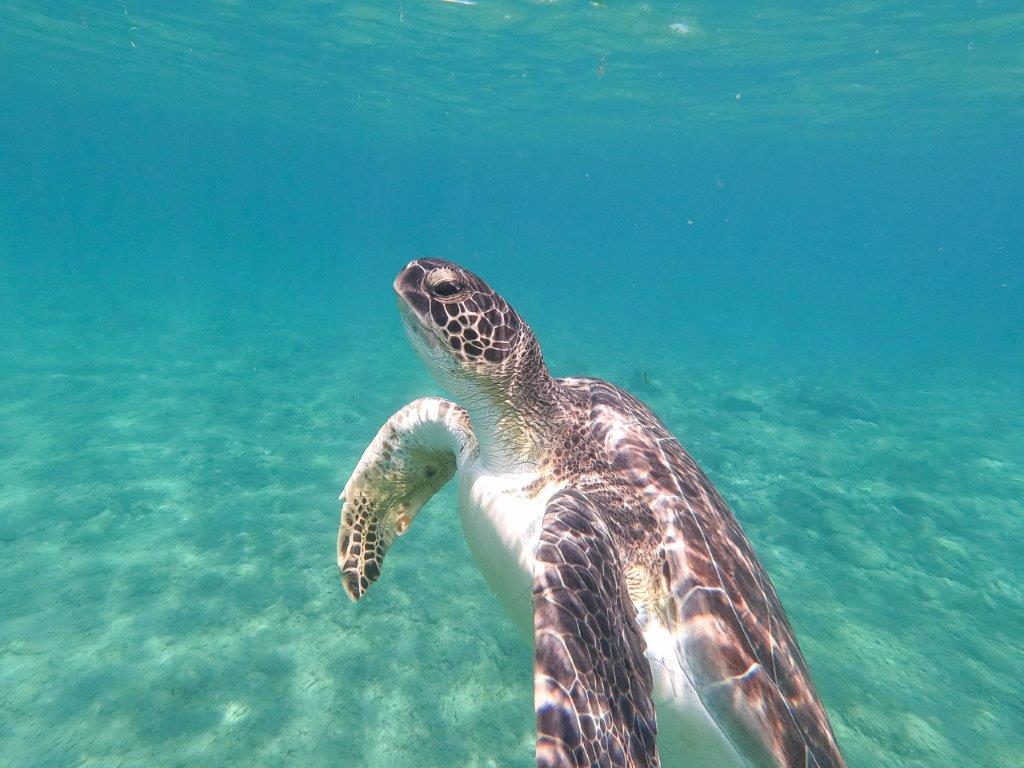
It was one of these magnificent adults that allowed me to swim alongside him. I approached slowly and he didn’t alter his pace, just gracefully gliding through the water, like he was flying. I swam quietly alongside him, watching him surface for air. Occasionally he got very close to me (which was how I was able to get close-up photos) but I didn’t touch him, as much as I wanted to. And then he dived down to eat some sea grass. It was a magical encounter and I silently thanked him for allowing me to share the water with him.
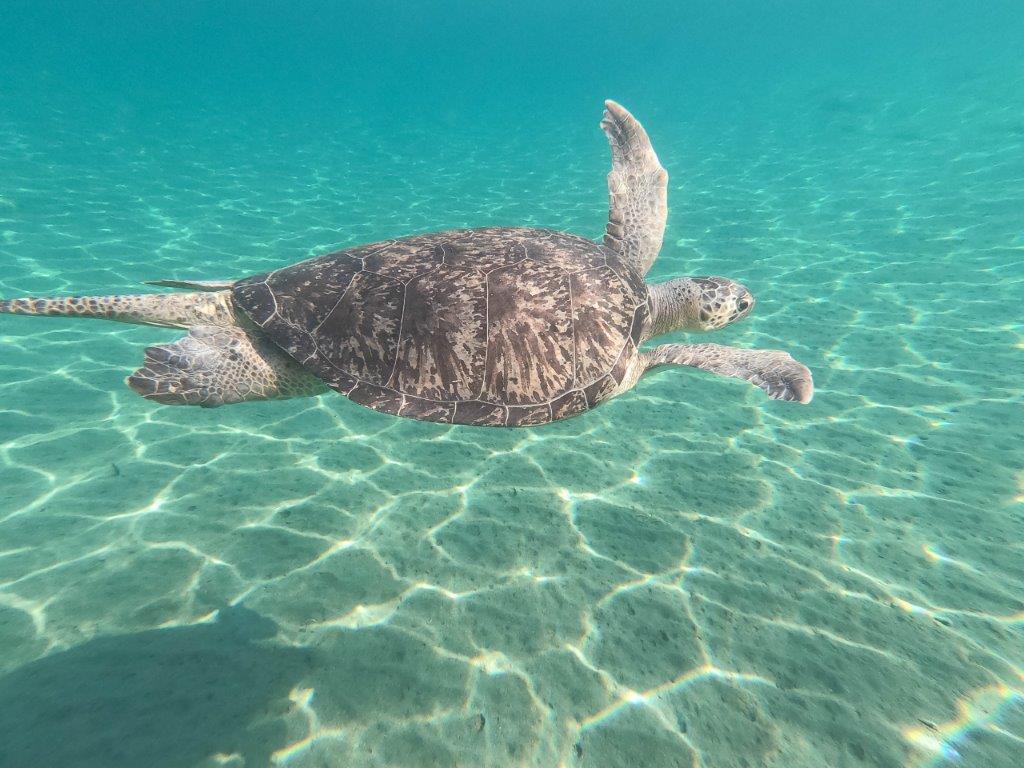
For the same reasons as above. Splashing, shouting and touching all risk scaring the turtles. If you find yourself in the company of a turtle, be quiet, stop splashing around. It’s important not to do anything that might alter its behaviour or interfere with its feeding.
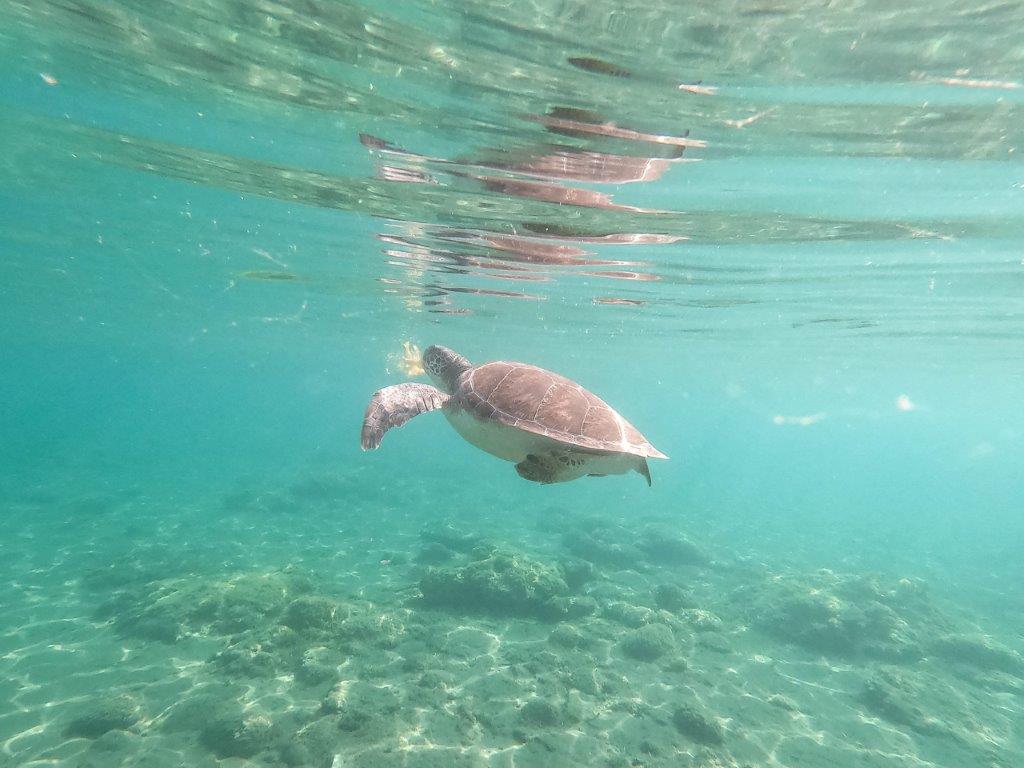
All living creatures deserve our respect and the sea turtles need extra protection because they are endangered. We get two types in Cyprus, the Loggerhead and the Green. Green turtles are the most endangered. The females return to the shores where they were born in order to lay their eggs. Only 1 in 1000 of the hatchlings will survive to adulthood.
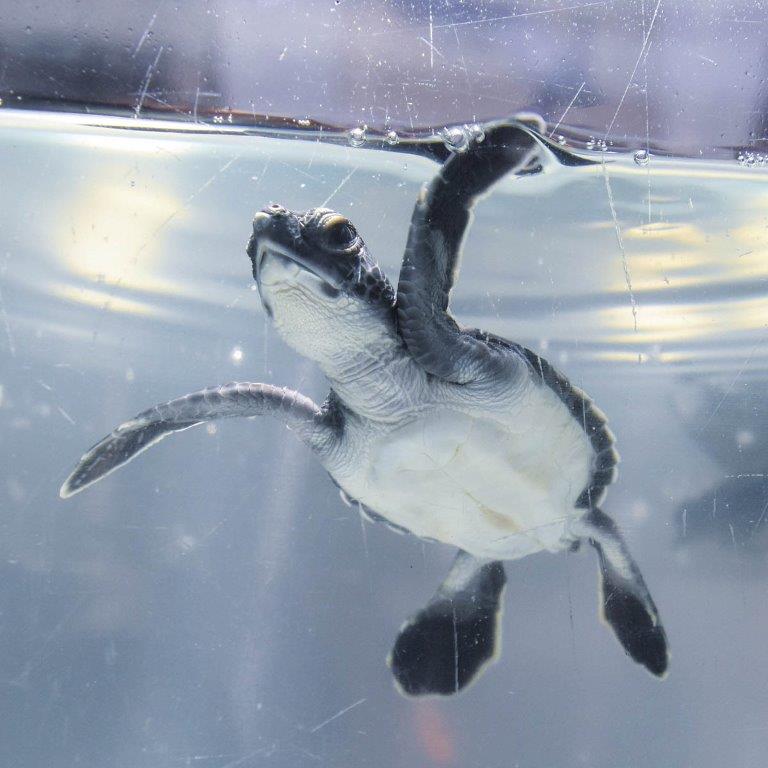
The main threats to turtles are predation, the fishing industry and mass development of the coastline. Foxes often dig up unprotected nests and eat the eggs. Human activity often compromises the pristine beaches the turtles need to hatch on. Lights from buildings can confuse the hatchlings as they make their way to the sea (they should follow the light of the moon, not artificial human lights). And if they reach the sea, they often perish as bycatch in fishing nets, by ingesting fishing lines or getting caught in them. Or they die after swallowing plastic bags that look like jellyfish.
Through the conservation efforts of Dr Andreas and the various Turtle Watch groups, turtle nests have quadrupled in Cyprus since the 1980s.
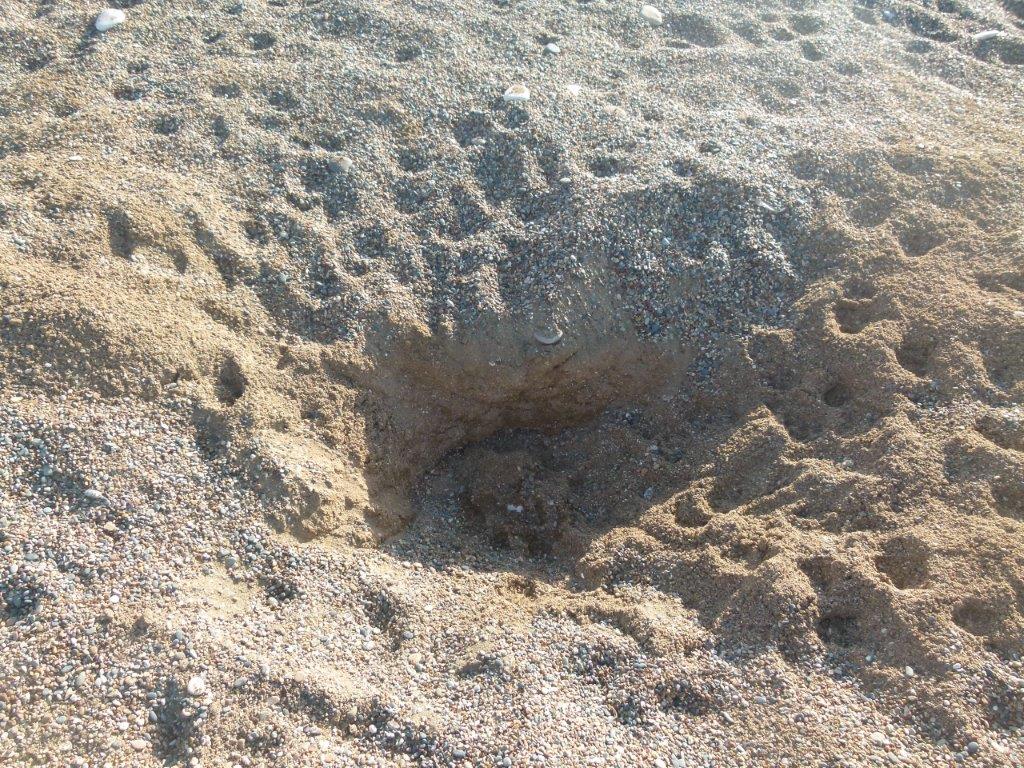
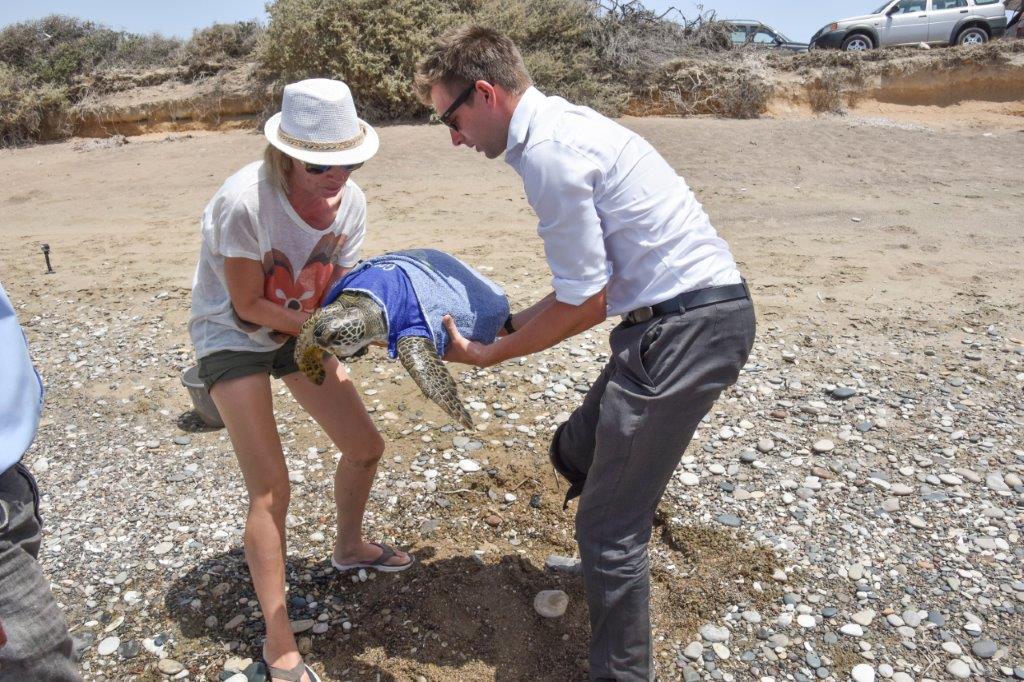
Keep the beaches clean. Take your rubbish home with you. Organise a beach clean. Rubbish on the beach can end up in the sea which can be perilous to marine life. It can also be perilous to hatchlings trying to make their way to the sea.
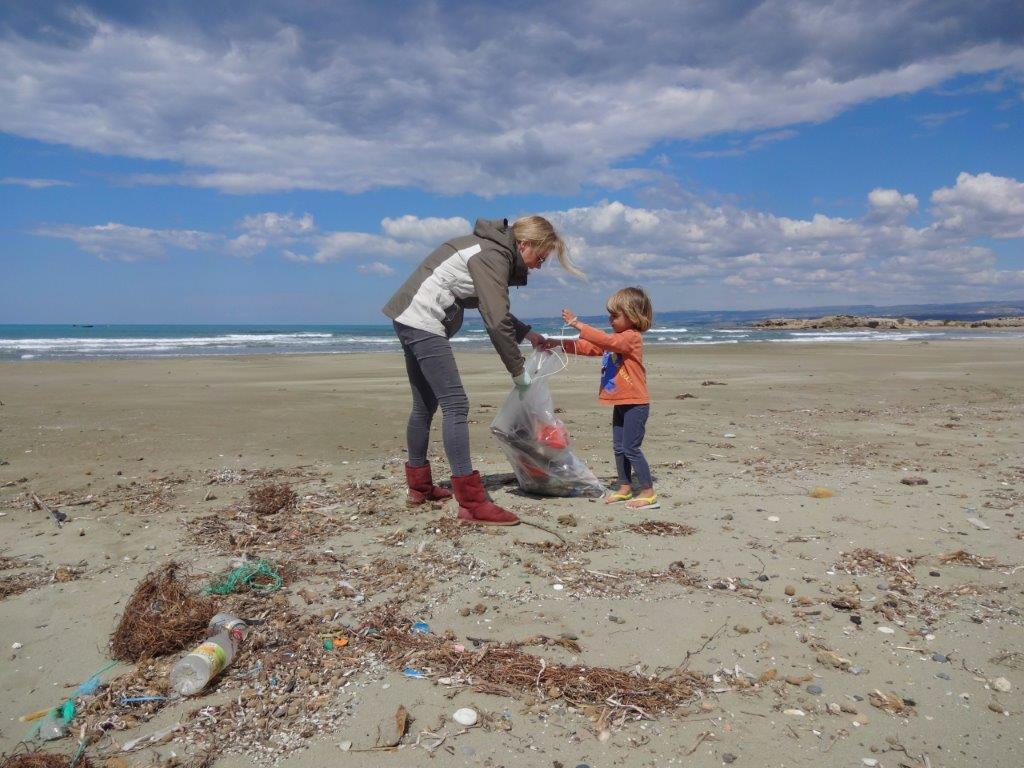
Volunteer for a Turtle Watch group. They organise beach cleans at the start of the nesting season (April/May). During the season, volunteers take turns walking their designated beach every day, checking for nests. Turtle tracks are usually pretty easy to spot! The nests are then protected with a metal cage to prevent predation of the eggs.
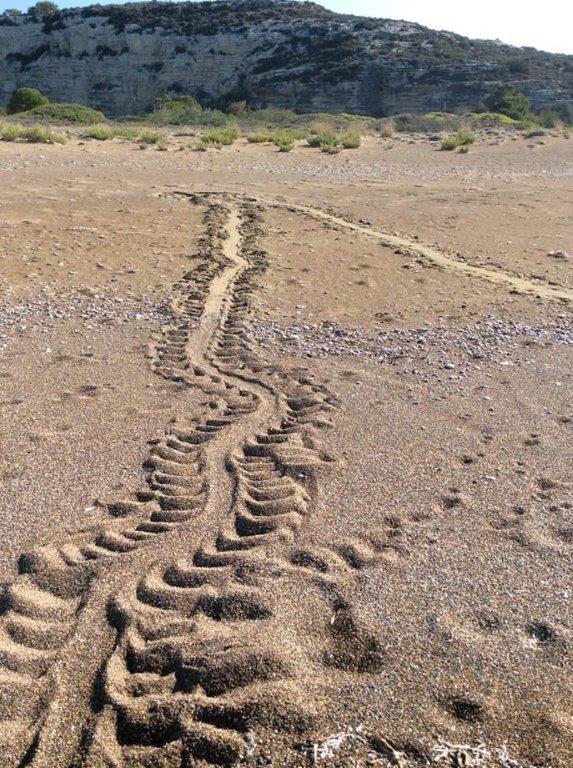
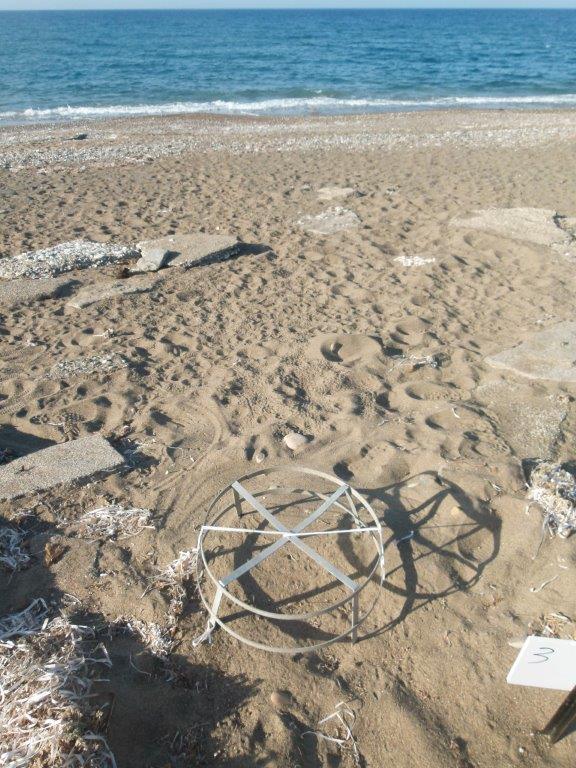
Keep dogs off the beaches – the scent of a dog may cause a female turtle to abort nesting and jettison her eggs into the sea.
Don’t use umbrellas or tents on the beach. The umbrella pole or tent pegs could puncture an undiscovered egg chamber causing it to collapse. It was disappointing to see how many people ignored this on Lara beach, one of the island’s most important nesting sites.
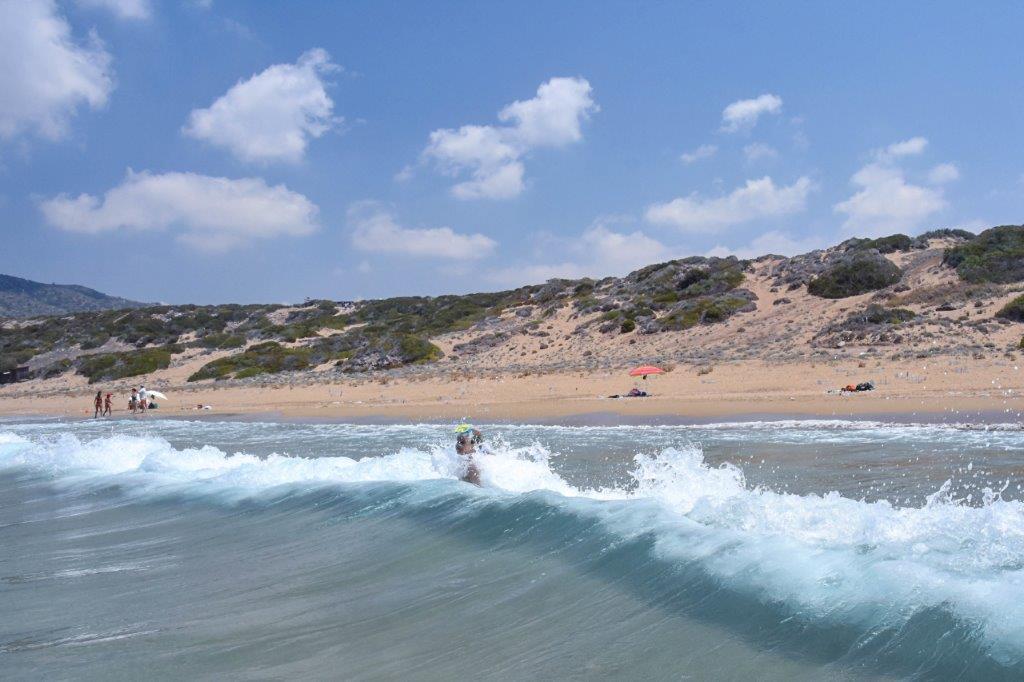
Don’t drive on the beach – for the same reason as above.
Stay off the beaches at night. Hatchlings use the moon to direct them to the sea. Torchlight, firelight and car lights etc can confuse them, causing them to waste crucial energy walking in the wrong direction.
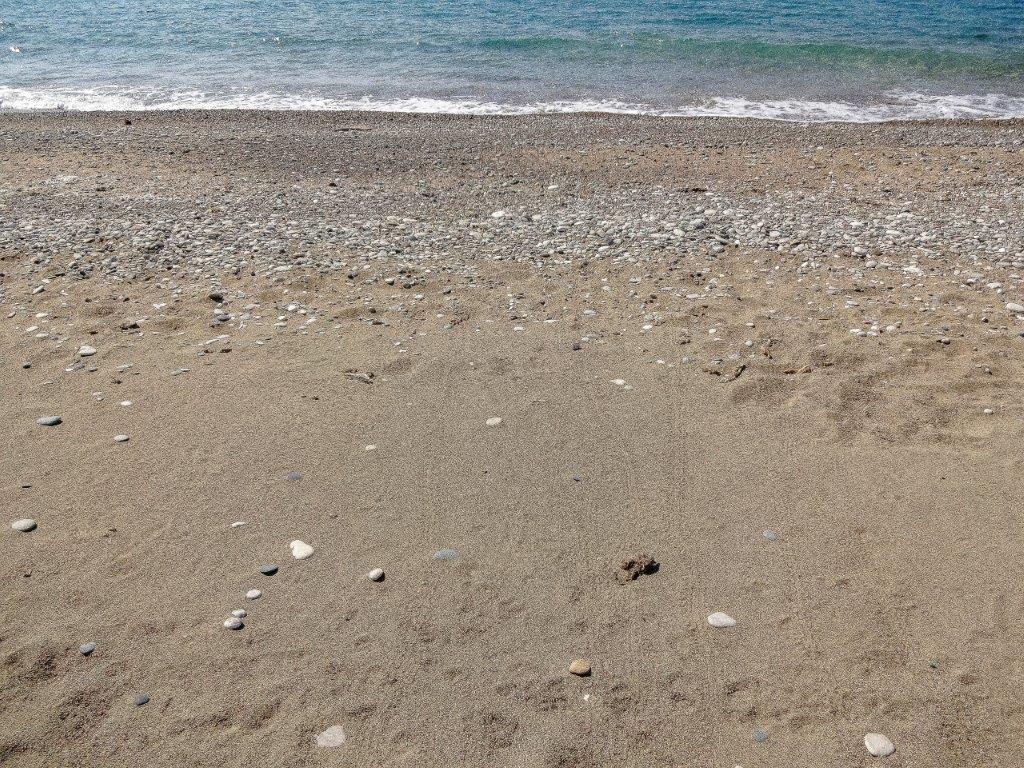
In truth, most of the people I saw swimming with the turtles were being respectful. Some people genuinely didn’t know they shouldn’t touch them and I hope this post helps with that.
For me, swimming with a turtle was one of the most moving and exhilarating experiences of my life. For Goobie too. His turtle encounter has only deepened his passion for marine life. And yet, this amazing memory is laced with guilt. From knowing that, despite being so careful around the turtles, it would have been best for them if I hadn’t been there at all.
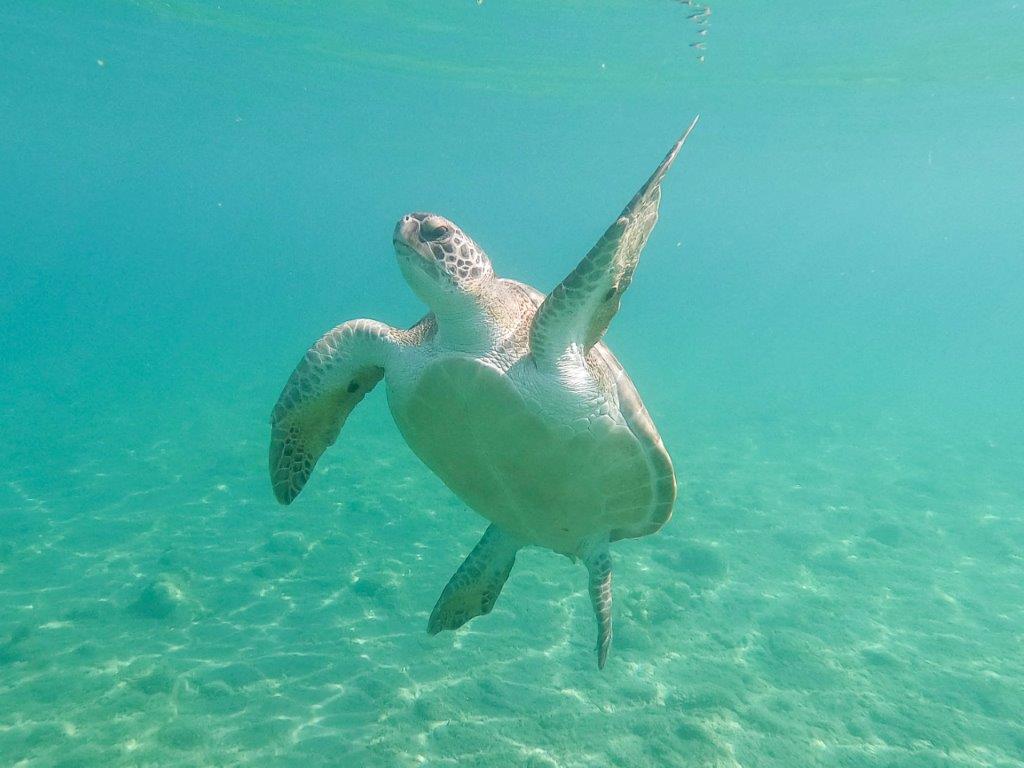
For more information, go to www.seaturtlestatus.org
Leave a Reply